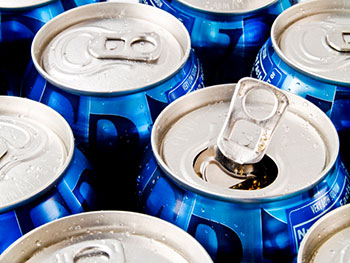More Health and Nutrition Bites
Related
A Serious Look at Fructose
Not long ago I answered an "Ask Dr. Gourmet" question about
High Fructose Corn Syrup (HFCS). She noted that her local Applebee's had HFCS in almost
everything and wondered what research I had done on its risks. At the time
I could only say that the research on High Fructose Corn Syrup was inconclusive
but that it certainly contributed a lot of calories that folks just don't
need.
Whole Grains and Belly Fat
For the last few weeks I've been writing about the effects of the Mediterranean
Diet in general and some of the specific components of the Mediterranean
Diet on abdominal fat deposition (read: belly fat). My patients are
often concerned about belly fat, not because of its effects on their
health, but because they don't like the way it looks. The truth is
that abdominal fat is a good indicator of greater risks to your health.
Mediterranean Diet Helps Prevent Central Fat Distribution
In last week's Dr. Tim Says.... column I wrote about the
effects of a Mediterranean-style diet on central adiposity - otherwise
known as
"belly fat." I recently ran across a study conducted in Spain
that compares three different diets head-to-head on their effects
on the distribution of belly fat, so I thought I'd share it with
you (Diabetes Care 2007(30): 1717-1723).
Health & Nutrition Bites
Get the latest health and diet news - along with what you can do about it - sent to your Inbox once a week. Get Dr. Gourmet's Health and Nutrition Bites sent to you via email. Sign up now!
Belly fat and sodas

Belly fat fixes seem to be ubiquitous: "Flatten your stomach with this one weird trick!" "Lose 10 pounds of belly fat by doing this!" The problem is that there's belly fat... and then there's belly fat. What most people don't realize is that there are two types of belly fat - and one is far worse for you than the other.
As I've discussed in previous Health and Nutrition Bites ("Whole Grains and Belly Fat," 05/18/11; "Mediterranean Diet Helps Prevent Central Fat Distribution" 05/11/11), the two types of belly fat are Subcutaneous Adipose Tissue (SAT: fat deposited beneath the skin) and Visceral Adipose Tissue (VAT: fat deposited around the internal organs). While both contribute to belly bulge, Visceral Adipose Tissue is a component of Metabolic Syndrome and is more strongly linked to reduced insulin sensitivity and greater risk of diabetes as well as heart disease.
In other Bites, we've seen that increased intake of fructose (a component of HFCS: High Fructose Corn Syrup) has been linked to greater formation of VAT as opposed to SAT ( "A Serious Look at Fructose" 01/06/10). Recently a team of scientists at Harvard, Tufts University, and the University of Massachusetts decided to take that research a step further by assessing the impact of drinking sugar-sweetened beverages (usually containing HFCS) on a person's Visceral Adipose Tissue (J Nutr 2014;144(8):1283-1290).
They made use of data gathered through the Framingham Heart Study, a large-scale, long-term, multi-generational study of many thousands of residents of Framingham, Massachusetts, all of whom responded to detailed dietary, lifestyle, and demographic questionnaires along with regular physical assessments by medical personnel. For this particular study the researchers utilized a subgroup of the study who had undergone multidetector computed tomography (MDCT) to measure their Visceral and Subcutaneous abdominal fat. After excluding those who had diabetes or who were on glucose-lowering medications, their sample group included 2,596 men and women with complete dietary and lifestyle questionnaires to go with their adiposity measurements.
The participants were grouped into four levels of increasing intake of both sugar-sweetened and diet beverages: less than 1 serving per month, 1 serving per month to less than 1 serving per week, 1 serving per week to less than 1 serving per day, and at least one serving per day. After taking into account such variables as age, sex, caloric and alcohol intake, and smoking status, the participant's intake of each type of beverage was then correlated with their amounts of Visceral Adipose Tissue and Subcutaneous Adipose Tissue.
After accounting for the participant's amount of Subcutaneous Adipose Tissue, the researchers found that those who drank sugar-sweetened beverages such as colas or fruit drinks (whether caffeinated or decaffeinated) on a daily basis had 22% more Visceral Adipose Tissue than those who drank less than one serving per month. Indeed, the more sugar-sweetened beverages they drank, the greater was their ratio of Visceral Adipose Tissue to Subcutaneous Adipose Tissue. On the other hand, drinking more diet soda was associated with higher Body Mass Index, Waist to Hip Ratio, and Subcutaneous Adipose Tissue.
What this means for you
This study is a correlational study, meaning that by itself it does not prove that drinking sugar-sweetened beverages causes increased Visceral Adipose Tissue. Nor does this study focus solely on drinks sweetened with High Fructose Corn Syrup. That said, taken together with other research like that in "A Serious Look at Fructose"(01/06/10), it's quite concerning. If you drink sugar-sweetened beverages, switch to diet. Or better yet, switch to water.
First posted: July 22, 2014
